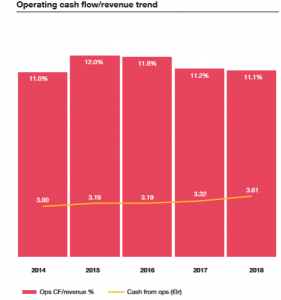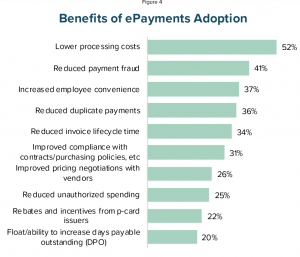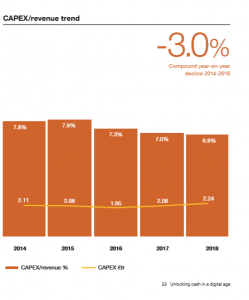Working Capital has changed over the last five years, but one large consistency remains; companies continue to fail to optimize it. Currently, an enormous 1.2tr of excess Working Capital exists on global balance sheets, according to a PWC report. In the US, top companies left $1tr tied up and failed to seize profits by as much as 20%, a Hackett Group’s survey has revealed. This blog will identify five tips for Working Capital in 2020, in order to grow and release your Working Capital.
Before we delve into five tips, I highly recommend that you read our Working Capital blog first. It discusses what Working Capital is, how to work out the formula, the positive benefits of Working Capital and how to achieve the correct level.
The State of Working Capital
Let’s take a brief look back on the last five years, and the trends that have emerged in Working Capital.
Despite a significant gap still remaining between the better players in Working Capital and the worst, the difference has been relatively stable over the last couple of years. However, it does vary depending on the size of the company, the industry, and available resources. Data by PWC shows that although the top percentile did experience some decreases in areas like Days Sales Outstanding (DSO) and Days Inventory Outstanding (DIO), the lowest performers’ decline was higher.
An overall picture reveals that Working Capital is on the rise since 2017. Current figures show that it has increased by 9.4% in the last three years.
Capital expenditure saw a spike of 2% in 2018. However, the forecast for the next two years looks less than desirable. According to an S&P survey, it’s anticipated that global corporate CAPEX is to decline by 1% for 2020 and 2021.
Keeping all of this in mind, let’s delve into the five tips for Working Capital in 2020.
1. Digital Users to Reign Supreme
If you haven’t embraced technology, you’re going to find it challenging to get the metrics you require to improve your Working Capital. Those who use smart automation, analytics, and other tools that enhance Working Capital are at a distinct advantage. Automation and the likes are used to increase efficiency in areas such as AP, AR, and inventory, allowing them to identify areas to improve Working Capital. Additionally, technology such as Artificial Intelligence (AI) and Robotic Process Automation (RPA) are starting to play a central role in Working Capital in 2020.
2. Collaborate and communicate
To successfully boost your Working Capital, senior management need to make Working Capital an integral part of your company’s goals. Working Capital incorporates so many elements of the organization. Therefore, teamwork and clear communication will be fundamental to its success. CFOs need to reach out to other senior staff to ask for input when it comes to implementing a clear, formal structure into systems, analytics, and performance metrics. A reward incentive should also be introduced to employees who successfully identify areas to increase Working Capital.
3. Focus on sustainability
It has been widely accepted that Payables Days (DPO) isn’t a long-term sustainable route to increase Working Capital in 2020. In fact, a PWC report shows that there has been a decrease in DPO for the second year running. Interest rates are on the rise, so debt is an expensive route. Global trends indicate that reverse factoring is gaining popularity as a substitute for obtaining cash at a reasonable price and it keeps incurring debt away from your balance sheets, according to Spend Matters.
Don’t be tempted to jump for quick fixes, take to your balance sheets, and follow in the footsteps of companies who are addressing their assets. Sustainable ways of managing your Working Capital include management of procurement and inventory, paying vendors on time, and improving the receivables process. For more information on those points, read this blog, and build a sustainable Working Capital module.
Another method of building a maintainable Working Capital strategy is the management of your cash flow, which brings us to the next tip.

4. Prioritize Cash
Operating cash flows have been in decline as revenues have increased according to PWC. This is an opportunity to focus on your cash flow management.
What is cash flow management? It’s the process of tracking and analyzing any changes to the money coming in and out of your business.
You can increase your cash flow through e-Procurement technology. As previously mentioned, digital users will have the upper hand over manual users, as they have a centralized system that they can analyze supplier activity and spend. This tactic means they’re able to negotiate credit and payment terms with suppliers much more effectively. Moreover, if you make it easy to pay using software that allows suppliers to submit invoices online, you should see an increase in cash flow.
Turning your attention to cash flow strategies will allow you to release trapped cash, review your CAPEX strategy, the tax efficiency of your operation and non-trading contracts. You should also pursue any potential refunds that are owed to the company.
However, it should be noted that prioritizing cash flow to boost Working Capital will only work in businesses that are already profitable. To learn more about cash flows, click here.
5. A Move to ePayment
A Levvel survey revealed that lengthy invoice process times, late payments and payment errors are the biggest challenges in payment.

In a paper-based system, you’re forced to manually track discounts. More often or not, using this method means discounts are missed or out-going payments are paid late, as users don’t have any automatic prompting.
This negatively impacts your cash flow and your Working Capital. An ePayment solution will help you to organize and maximize early discounts and will allow you to make payments on time to avoid any late payment fines.
ePayments will also open up growth for international payments. In turn, this will allow you to control payments and grow Working Capital.
Working Capital in 2020
This year holds a lot of promise to free up and strive for better returns in Working Capital. Regardless of the size of your business, if you want to improve your Working Capital, it needs to be a company goal. Organizations need to use their communication and collaborate with different departments to ensure Working Capital’s success. This year’s attention should be on sustainability through methods such as cash flow management, as the lessons learned from the recession haven’t been forgotten.
If you haven’t gone digital, it’s highly advised that you look into automation and create efficiency in Procurement and Accounts Payable to release cash from your balance sheets. Digital users will be leading the way when it comes to Working Capital as they have the advantage of having an oversight on operations, reports, and analytics at their fingertips.



